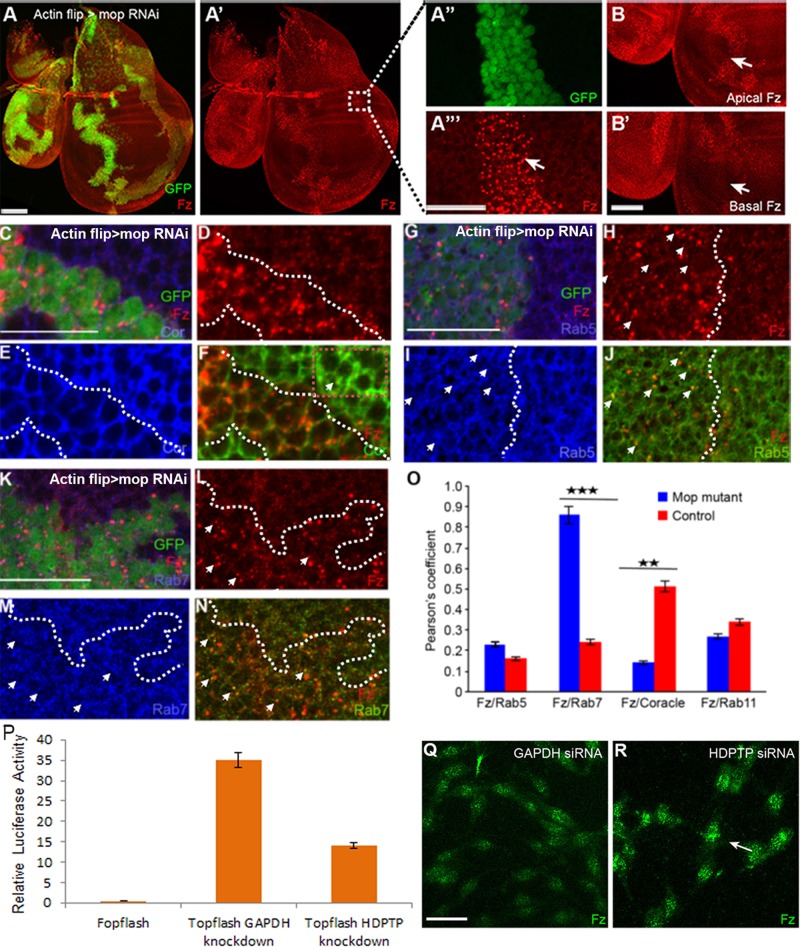FIGURE 1:
Absence of Mop causes trafficking defects of Fz. (A–A′′′) Knockdown of mop using the flp-out clones causes accumulation of Fz. Clones are marked by the presence of GFP. The boxed region in A′ is zoomed in in A′′ and A′′′. Arrow indicates the punctate localization of Fz. (B, B′) Absence of Mop causes accumulation of Fz protein in the apical surface (B, arrow) as compared with the basal surface (B′, arrow). Colocalization of Fz and Coracle (C–F, O), Fz and Rab5 (G–J, O), and Fz and Rab7 (K–O) in control and mop-knockdown (marked by GFP) tissue. Arrow indicates colocalization of the proteins in each case. Dotted box in F indicates colocalization of Fz and Cor outside the clone. (O) Quantification of colocalization (by measuring Pearson’s coefficient) observed in the conditions shown in F, J, and N. Bar graph shows the increased colocalization of Fz with early and late endosomes in the absence of Mop; p < 0.03 for Fz and Rab5, p < 0.0071 for Fz and Rab7, p < 0.0023 for Fz and Coracle, and p < 0.01 for Fz and Rab11. (P) Knockdown of HDPTP in mouse L cells causes reduced Wnt signaling as measured by Topflash reporter activity. (Q, R) Immunohistochemistry of L cells transfected with GAPDH (Q) and HDPTP siRNA (R). Knockdown of HDPTP causes accumulation of Fz in cells (arrow indicates punctate Fz localization). mop was knocked down using VDRC line 104860. Scale bars, 20 μm.

